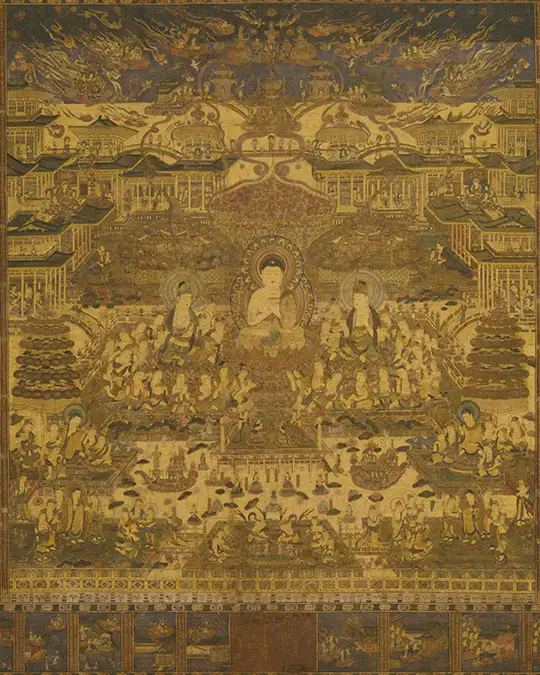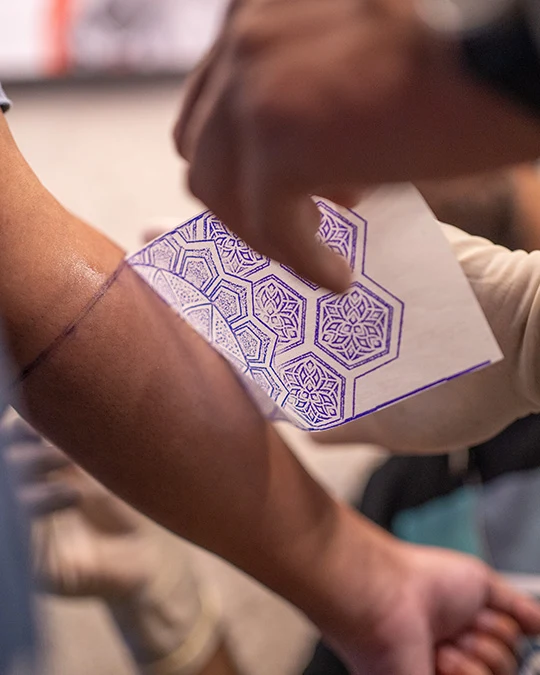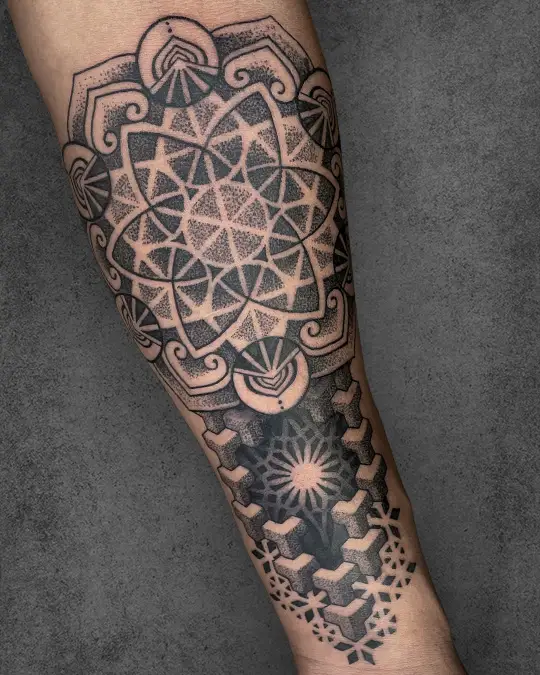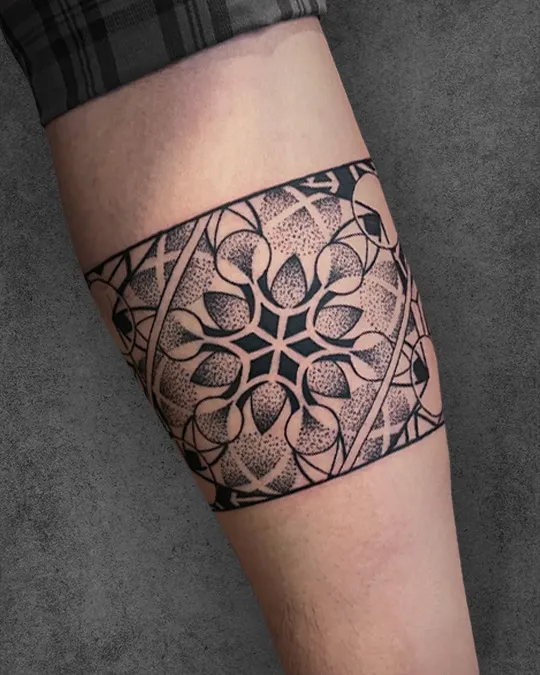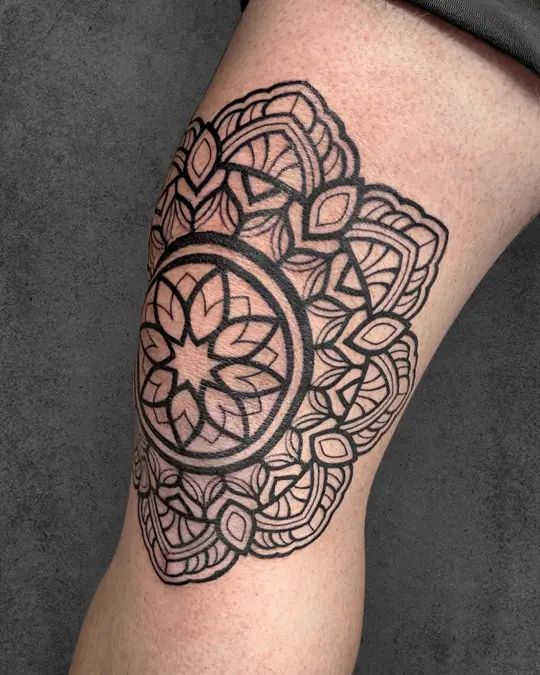Mandala Tattoos: The Art of Spiritual and Geometric Beauty
- Sunny Bhanushali
- Jul 17, 2024
- 5 min read
Updated: Sep 17, 2024

Introduction
Mandala tattoos are a mesmerizing and meaningful choice for tattoo enthusiasts who appreciate intricate designs and spiritual symbolism. These tattoos incorporate geometric patterns and shapes, creating visually stunning and deeply symbolic art. In this blog, we will explore the history, characteristics, techniques, symbolism, and the top artists known for their expertise in mandala tattoos.
Historical Background
Mandala tattoos have their origins in ancient cultures, particularly within Hinduism and Buddhism, where mandalas were used as spiritual symbols representing the universe. The word "mandala" comes from Sanskrit, meaning "circle," and these designs are often circular in nature, symbolizing wholeness, unity, and harmony. Mandala tattoo designs have also been found in Native American and other indigenous cultures, used in rituals and ceremonies to represent the connection between the spiritual and physical worlds. Over time, mandala designs have evolved and been incorporated into tattoo art, where they are appreciated for their intricate patterns and deep tattoo symbolism.
Characteristics of Mandala Tattoos
Mandala tattoos are characterized by their use of geometric shapes and symmetrical patterns. These designs often feature circles, triangles, squares, and other shapes arranged in a balanced and harmonious manner. The emphasis on symmetry in tattoos and precision adds to the visual impact of these tattoos, making them a popular choice for both small and large designs. Mandala tattoos can be created in various mandala tattoo styles, including blackwork, color, and dotwork, each adding a unique touch to the design.

Techniques and Styles
Creating mandala tattoos requires a high level of skill and precision. Artists use various tattoo techniques such as linework, dotwork, and shading to achieve the desired effect. Linework emphasizes clean, sharp lines to outline and fill the shapes, ensuring the design remains crisp and clear. Dotwork, or pointillism, involves using tiny dots to create gradients, shading, and intricate details within the geometric patterns. Shading techniques are used to add depth and dimension to the design, making the mandala appear more dynamic and visually appealing.
There are several popular styles and variations of mandala tattoos. Minimalist mandala tattoos focus on simplicity and clean lines, often using negative space to enhance the overall composition. These tattoos are characterized by their understated elegance and subtlety, making them perfect for individuals who appreciate the beauty of simplicity. On the other hand, complex mandala tattoo designs can cover large areas of the body, creating a bold and dramatic effect. These tattoos often incorporate multiple shapes and layers, resulting in a rich and intricate design that draws the viewer's attention.
Symbolism and Meaning
Mandala tattoos meanings are deep and symbolism. Common geometric shapes in mandala tattoos have their own interpretations: circles represent unity and infinity, triangles symbolize balance and harmony, and squares denote stability and structure. The intricate nature of mandala tattoos can also symbolize the complexity and interconnectedness of life. For many, spiritual mandala tattoos are not just about aesthetics but also about expressing deeper philosophical and spiritual beliefs.
To explore more elements of the sacred geometry tattoos, please read the blog: Understanding Geometry Tattoos: The Meaning Behind Geometric Shapes and Patterns.
In addition to individual shapes, the arrangement and combination of geometric elements in mandala tattoos can hold significant meanings. Mandalas are often used in meditation practices and are believed to promote inner peace and balance. Sacred geometry, which involves the use of specific geometric shapes and patterns believed to have spiritual significance, is another popular theme in mandala tattoos. These patterns are thought to reflect the fundamental structures of the universe, connecting the wearer to the greater cosmos and the underlying order of existence.
Choosing a Design
When choosing a mandala tattoo design, there are several factors to consider. First, think about the mandala tattoo meaning and symbolism you want to convey with your tattoo. Do you want a design that represents unity, balance, or spirituality? Next, consider the style and complexity of the design. Do you prefer a minimalist mandala with clean lines and negative space, or a more complex design with multiple layers and intricate details?
You can choose between custom and pre-designed mandalas. Custom mandala tattoos allow you to work with an artist to create a unique design that reflects your personal preferences and your mandala tattoo symbolism. Pre-designed mandalas, on the other hand, offer a wide range of ready-made options that you can choose from. Whichever option you choose, make sure to communicate your ideas and expectations clearly with your artist to ensure a satisfying result.
Placement and Size
The Mandala tattoo placement and size are important considerations that can affect the overall design and impact of the tattoo. Popular placements for mandala tattoos include the forearm, upper arm, back, chest, and thigh. These areas provide enough space for the intricate details and symmetry in tattoos to be displayed effectively.
The size of your mandala tattoo can also influence the level of detail and complexity of the design. Intricate mandala tattoos and layers are better for larger tattoos, while smaller tattoos may focus on simpler and more minimalist designs. Consider how the mandala tattoo placement and size of your tattoo will complement your body and personal style.
Finding the Right Artist
Choosing the right artist for a mandala tattoo is crucial to achieving a high-quality design. Look for artists who specialize in mandala and geometric mandala tattoos, as they will have the expertise and precision required for these intricate designs. Review their portfolios to evaluate their technique, attention to detail, and consistency. It's also important to discuss your design ideas and expectations with the artist to ensure a collaborative and satisfying experience.
When evaluating an artist's portfolio, pay attention to their ability to create clean, sharp lines, consistent patterns, and well-balanced designs. A skilled mandala artist will demonstrate precision and control in their work, ensuring that the shapes and geometric patterns are symmetrical and cohesive. Additionally, consider the artist's experience with different tattoo styles and tattoo techniques, such as linework, dotwork, and shading, as these can enhance the overall impact of a mandala tattoo. Don't hesitate to ask questions about their process and approach to ensure they can bring your vision to life.
Gallery of Mandala Tattoos
Explore the beauty and intricacy of mandala tattoos through this collection of stunning designs. Each tattoo showcases the unique creativity and skill of the artist, highlighting the versatility and elegance of mandala art.
Top 10 Tattoo Artists for Mandala Tattoos
Discover the best tattoo artists specializing in mandala tattoos. These artists are renowned for their precision, creativity, and expertise in creating stunning mandala tattoo designs.
For detailed profiles and portfolios, visit our Top 10 Tattoo Artists for Mandala Tattoos blog.
Spiritual mandala tattoos are a mesmerizing and meaningful choice for tattoo enthusiasts. Their combination of geometric beauty, spiritual significance, and intricate detail makes them a timeless and versatile style. By understanding the history, techniques, and tattoo symbolism behind these tattoos, you can appreciate their beauty on a deeper level and find the perfect design that resonates with you. Whether you choose a simple geometric shape or a complex pattern, mandala art offers a powerful way to express your individuality and spiritual beliefs.




